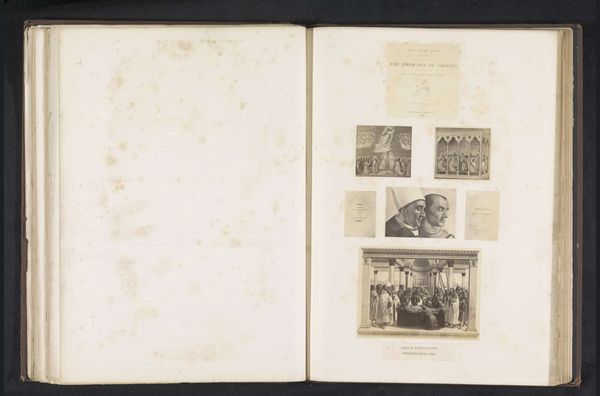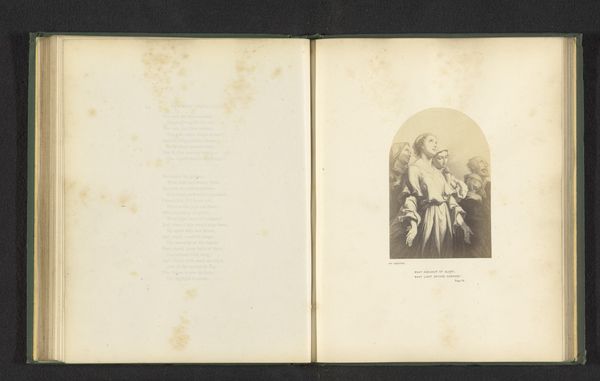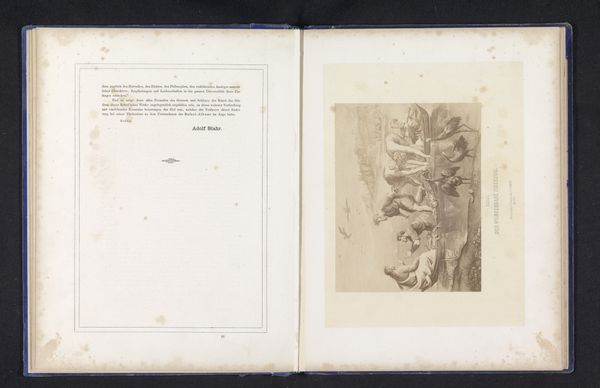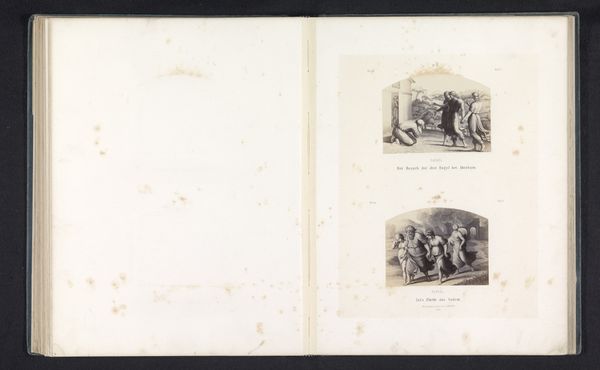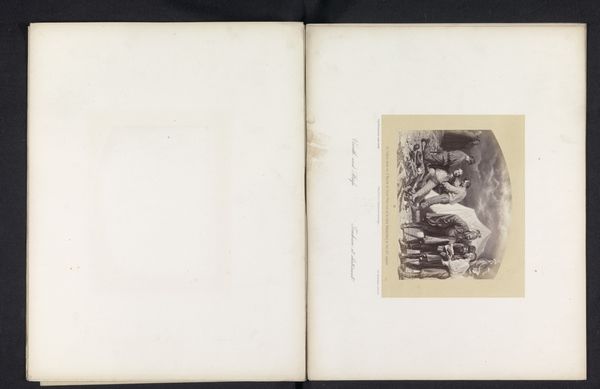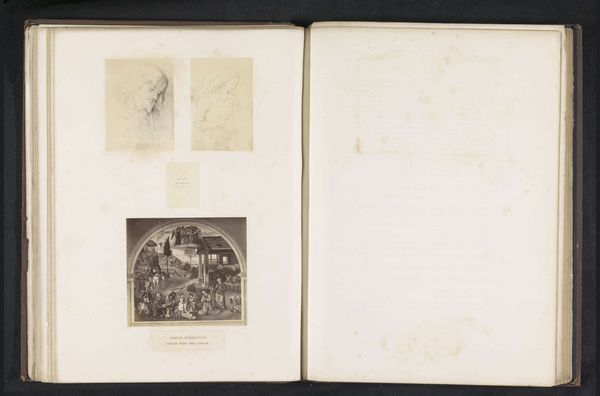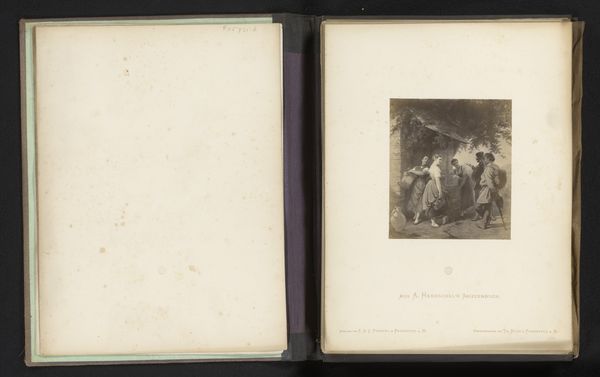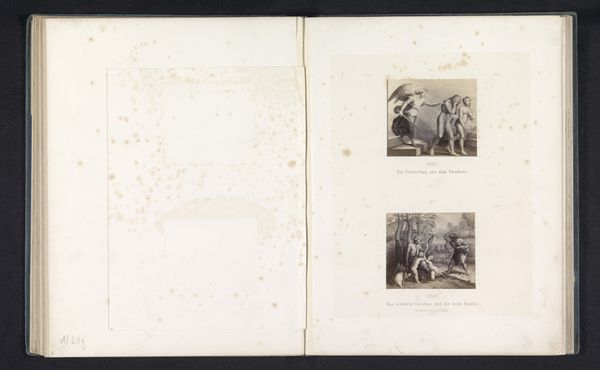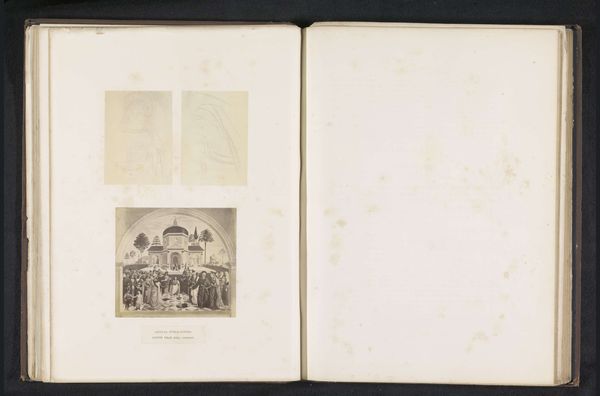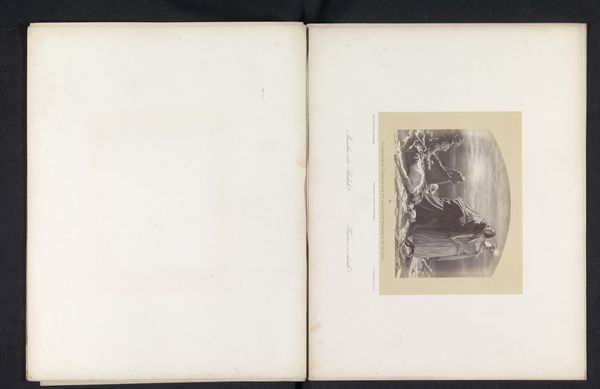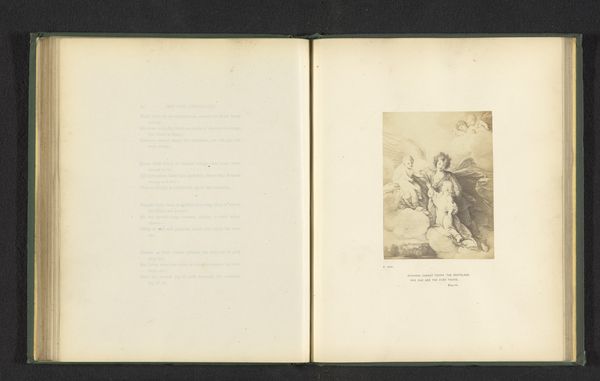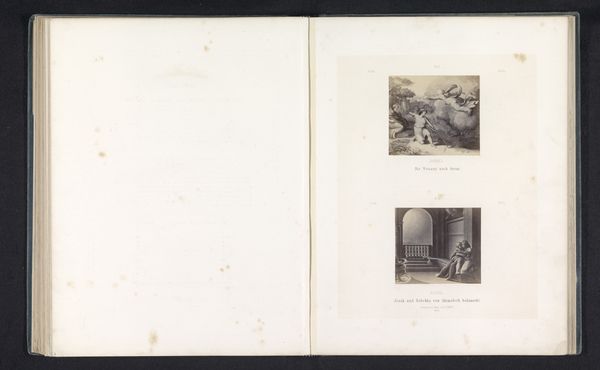
Fotoreproducties van prenten naar fresco's met voorstellingen van de geboorte van Christus en de aanbidding door de koningen door Rafaël voor de loggia's in het Vaticaan before 1861
0:00
0:00
lithograph, print, etching
#
lithograph
# print
#
etching
#
11_renaissance
#
history-painting
Dimensions: height 325 mm, width 250 mm
Copyright: Rijks Museum: Open Domain
Curator: These images offer us a glimpse into a fascinating intersection of art and reproduction. Here we have a page from a book containing photolithographs of etchings, depicting frescoes by Raphael in the Vatican Loggias, created before 1861 by Gustav Schauer. It shows, specifically, the Nativity and the Adoration of the Magi. Editor: The immediate impact is almost like looking through frosted glass, isn't it? There's a delicacy to these printed copies; a certain faded charm in capturing what were initially very grand, sweeping artworks in a different medium, made for mass distribution. How was this meant to change art’s traditional patron client relationship and the general economy of art in that period? Curator: Exactly. There is something ghostly and delicate in their new scale and rendering. To your point, it represents the rise of art reproductions—allowing a much broader audience to access and experience Raphael’s work, without ever setting foot in the Vatican. Consider how radically this shifted artistic knowledge, democratizing imagery once reserved for elite circles. The etching process allowed for quite precise duplication while lithography democratized this reproductive labour. Editor: So the materials used – the printing press, etching tools, photographic methods - actually dictate who gets to "own" art, even if just an image of it. Did the intended consumer ever feel as though they "owned" part of this imagery or was it understood to just be a symbol of prestige in its Renaissance Italian provenance? Curator: Ownership, perhaps more in the symbolic than material sense. For the emerging middle class, these prints weren’t just decorations, they were a portal to High Culture. And, I think, imbued these works of “lesser material status” (print), with an almost sacred, even mystical quality as it brings divine Renaissance vision into one's domestic life. Editor: Right, even down to the very materials and methods, mass distribution turns previously one-of-a-kind art experiences into everyday accessible resources with a sense of cultural ownership... very powerful shift in dynamics. I have a better grasp of their social purpose, seeing how processes affected art spectatorship outside the canon. Curator: Glad to hear! Seeing these Renaissance depictions transformed and made accessible through print does give a real insight into the artistic and social dynamics of their time.
Comments
No comments
Be the first to comment and join the conversation on the ultimate creative platform.
